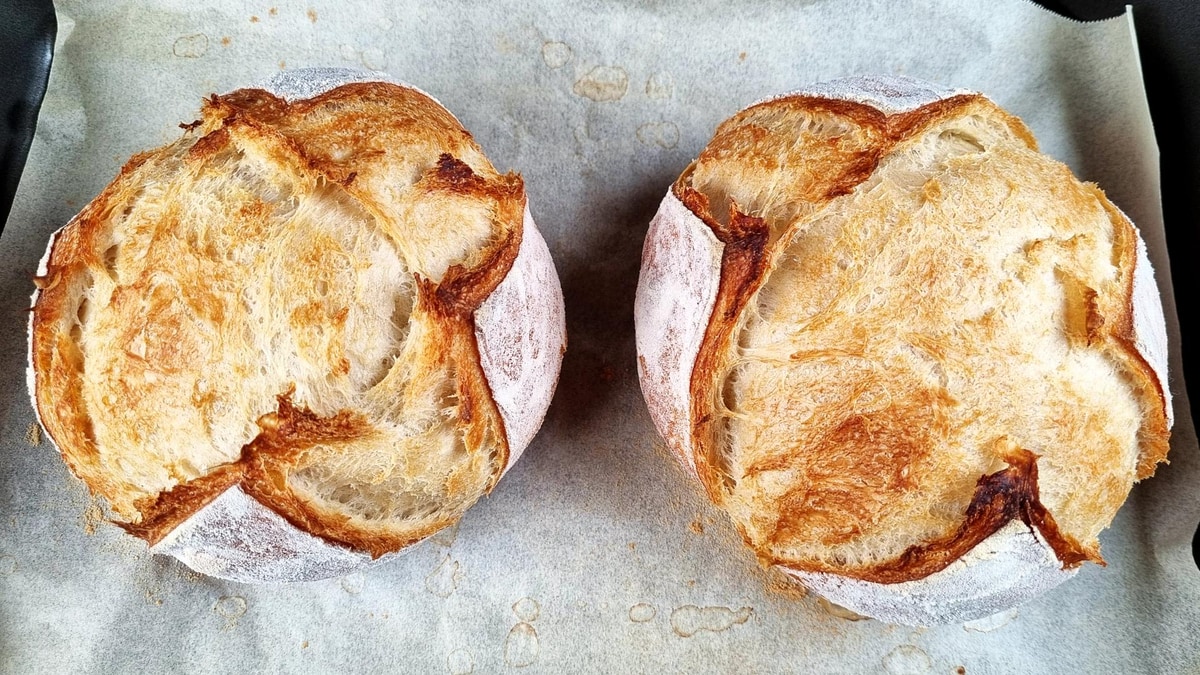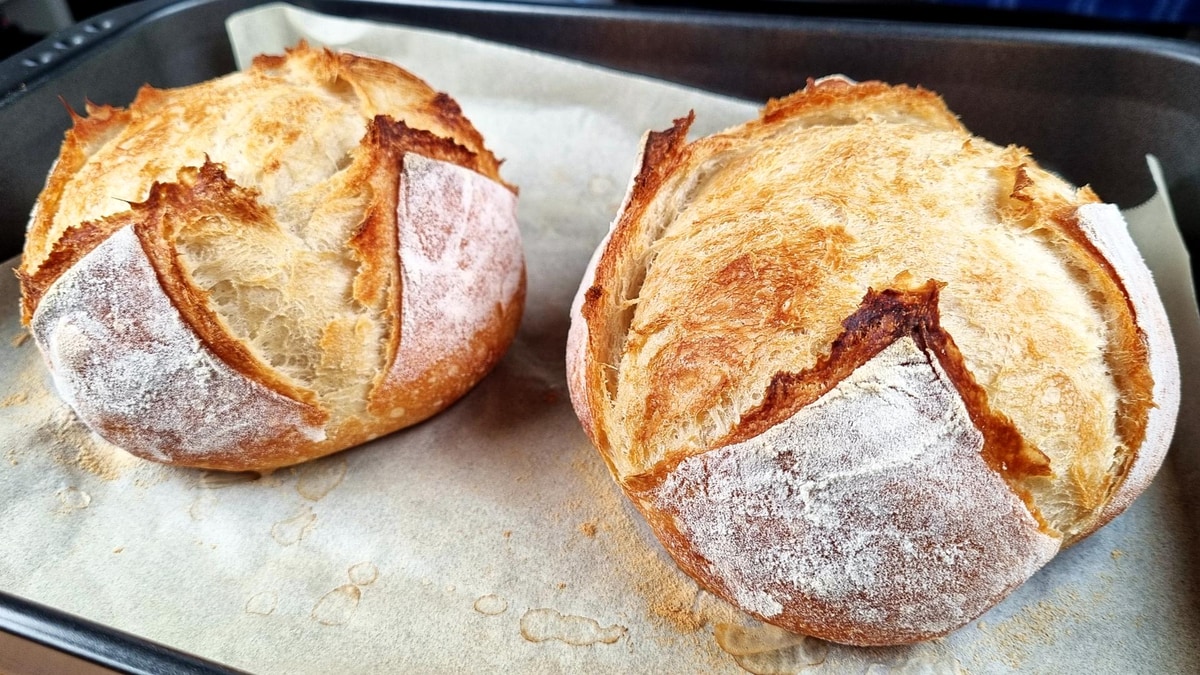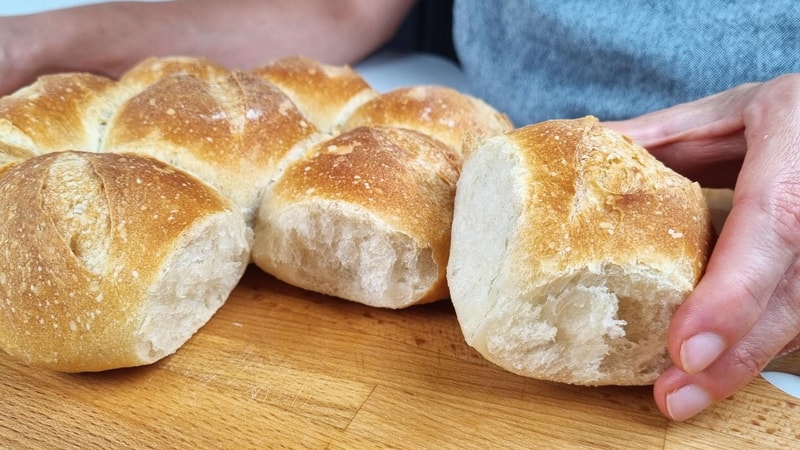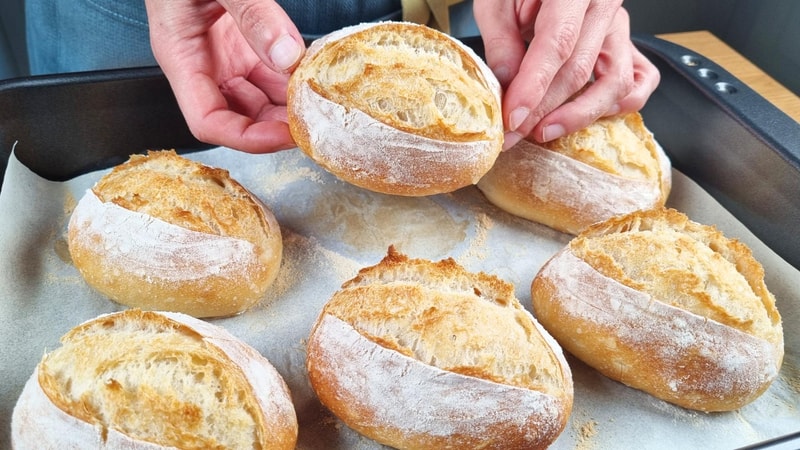artisanovernight breadsitalianinternational

Biga Bread - Tastes Divine!
So crispy and flaky outside, amazingly soft inside with incredible flavor
This biga bread tastes divine! The Italian pre-ferment method creates bread that's so crispy and flaky on the outside while remaining amazingly soft inside. The biga starter is a very stiff dough that ferments for 8-12 hours, developing an incredible sourdough-like aroma without needing a sourdough starter. The result is artisan-quality bread with complex flavors and that perfect crust everyone loves. This simple technique transforms basic ingredients into something truly special - the smell is amazing and reminds me of traditional sourdough!
How to Make Biga Bread - Crispy Outside, Soft Inside
Follow along with this visual guide to see the complete biga bread process
Follow along with my video for a complete visual guide! You'll see exactly how the biga should look at each stage, from the initial stiff dough to the amazing fermentation process. Watch as the bread develops that incredible crispy crust and hear it 'sing' as small cracks form - the best song in the world! The video shows you proper shaping techniques and how to test if your bread is perfectly baked with hollow taps.
For the Biga Starter
- 3 tbsp. Water(50 ml)
- ⅛ tsp. Fresh yeast(0.5 g, or ⅛ tsp. (0.5 g) dry yeast - just a tiny bit!)
- ¾ cup Bread flour(100 g)
For the Main Dough
- 1 cup Water(230 ml)
- 2 ½ cups Bread flour(320 g)
- 1¼ tsp. Salt(7 g)
Creating the Biga Starter
- 1Mix the biga: In a bowl, combine water with just a tiny bit of fresh yeast (or dry yeast). Mix well to dissolve the yeast completely.
- 2Add flour and mix: Add bread flour and mix until the flour is incorporated. It will result in a very stiff dough - this is exactly what you want! This is called 'biga' and it's amazing for developing complex flavors.
- 3Prepare for fermentation: Tear the biga into small pieces. This increases the surface area for better fermentation.
- 4Ferment the biga: Cover and let proof on the counter for 8-12 hours. If your kitchen is too warm (above 72°F/22°C), move it to the fridge. The smell is amazing! It reminds me of sourdough.Timer Available:Biga Fermentation (10:00:00)
Making and Baking the Bread
- 1Prepare the fermented biga: Tear the fermented biga into smaller pieces. It helps with even distribution throughout the final dough.
- 2Combine all ingredients: Add water, bread flour, and salt to the torn biga pieces. Mix until no dry flour remains. Just mix, no need to knead - the technique is gentle and effective.
- 3First rest: Cover and let rest for 30 minutes. A timer will remind you of the next step. This rest allows the flour to hydrate fully and the gluten to begin developing naturally.Timer Available:First Rest (30:00)
- 4Stretch and fold: With a wet hand, stretch the 4 sides of the dough and fold to the center. Lift the dough and slap it back into the bowl. I call this technique 'lift and slap' - it strengthens the dough effectively.
- 5Second rest: Cover and let rest for 30 minutes. The dough will become noticeably more elastic during this time.Timer Available:Second Rest (30:00)
- 6Repeat stretch and fold: Stretch and fold the 4 sides again. The dough is now so much more elastic! Lift and slap once more. So smooth!
- 7Final bulk rise: Let rise until it doubles in size - it usually takes about 2 hours.Timer Available:Bulk Fermentation (2:00:00)
- 8Prepare work surface: Sprinkle flour on your work surface. Fold the dough so it's easier to cut - those bubbles are always a good sign!
- 9Divide and shape: Divide the dough in half. For each piece, brush off excess flour, flatten gently, then fold into a tight ball. Tighten the ball by pulling the dough toward you and rub against work surface to seal properly.
- 10Rest shaped loaves: Let them rest for 10 minutes uncovered. This relaxes the gluten for easier final shaping.Timer Available:Bench Rest (10:00)
- 11Final shaping: Gently fold each loaf to tighten the surface. Pinch to seal, then do a quick seal by rubbing against the work surface. Place on the baking tray.
- 12Final proof: Cover with a towel and let rise for 30 minutes.Timer Available:Final Proof (30:00)
- 13Preheat and prepare: Heat your oven to 430°F (220°C). Lightly sprinkle flour over the bread and smooth with your hand. They're so nice to the touch!430°F (220°C)
- 14Score and add steam: Score the bread with a sharp blade or knife. Sprinkle a few drops of water around the bread for steam - this creates that amazing crispy crust.
- 15Steam bake: Cover with another tray of the same size to trap the steam. Bake at 430°F (220°C) for 20 minutes.430°F (220°C)Timer Available:Covered Baking (20:00)
- 16Finish baking: Remove the top tray and bake for 10 more minutes. They look great! The crust should be deeply golden and crispy.Timer Available:Final Baking (10:00)
- 17Cool and enjoy: Remove from oven and let cool. They sing as small cracks form on the crust - the best song in the world! Hollow taps mean it's perfectly baked. Now the most important thing - add some butter and enjoy!


Watch the Video Tutorial
See every step in action! Follow along with the complete video guide for perfect results.
You Might Also Like

Traditional Sharing Bread - Family Recipe
This bread is very dear to me - in my family, we call it 'sharing bread.' It's meant to be pulled apart and shared. With crispy, flaky crust and soft-as-cloud interior, this simple no-knead bread creates beautiful moments around the table.

Amazingly Crispy Crust Bread - Perfectly Soft Inside
The crust is amazingly crispy and perfectly soft inside! This therapeutic no-knead bread delivers the best crust you've ever made with a light and airy interior. Follow along with the video for perfect results.